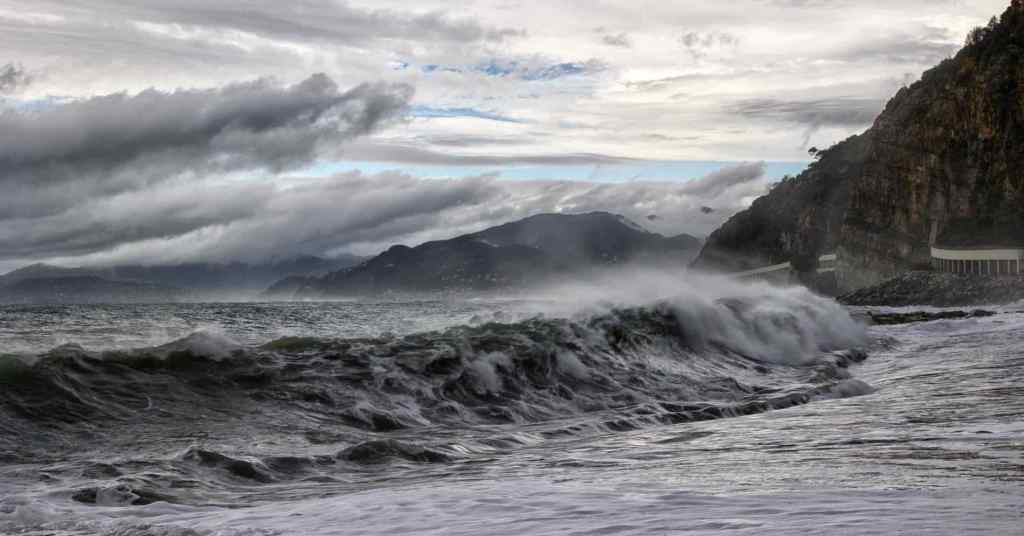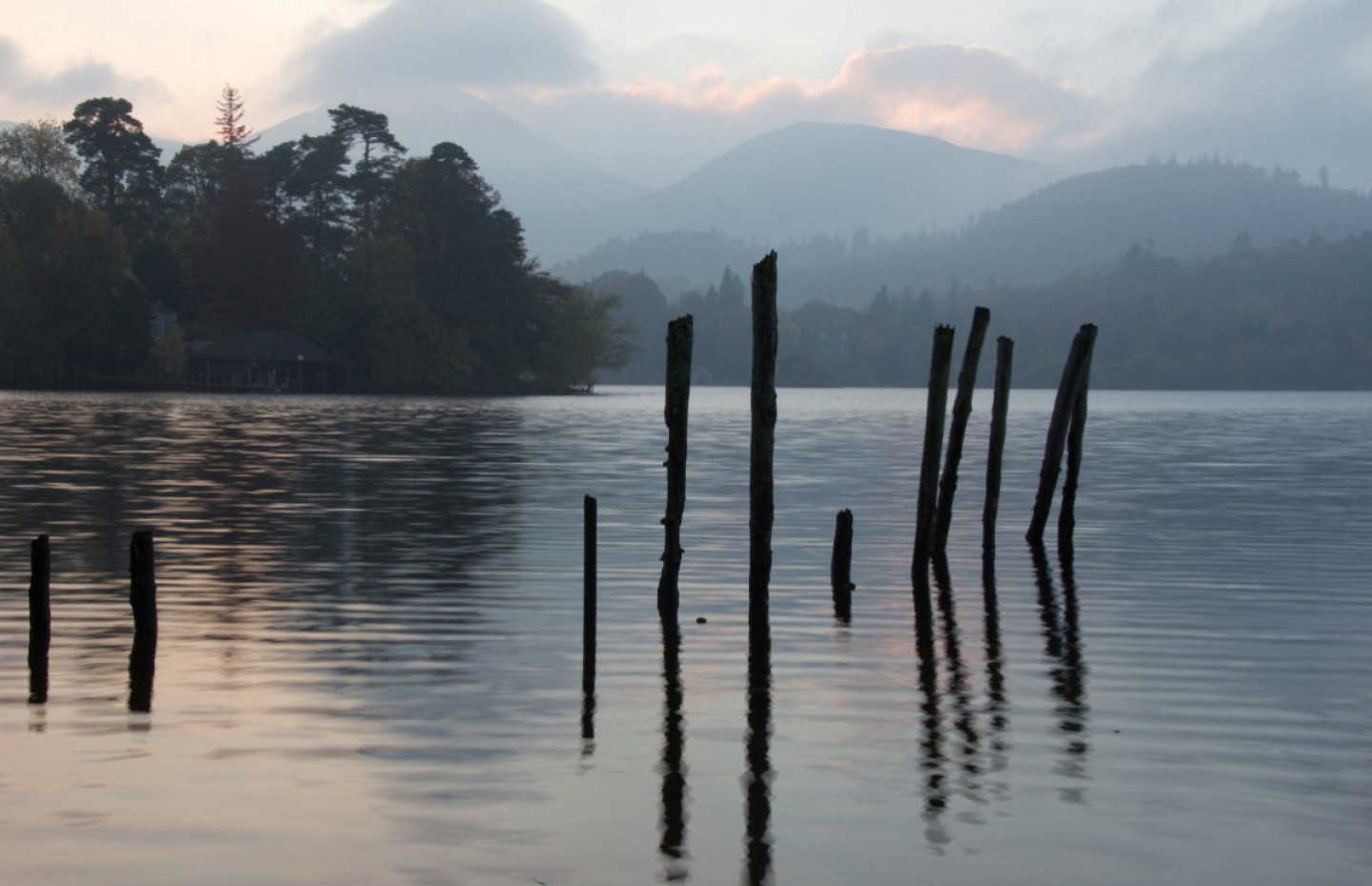The Cinque Terra or “The Five Lands” is a small area on the northwest coast of Italy in the Liguria region. They fall within the province of La Spezia and are 5 coastal villages of great scenic beauty and as such are a Unesco World Heritage site. The Cinque Terra is a popular tourist area and we were there for a week of walking and little bit of sightseeing last October.
The landscape around the villages is rugged and steep and the locals have constructed terraces right up to the cliffs in order to utilise the land. The areas above the villages are used to grow olive trees and grapes for wine. Citrus fruit trees can also be seen. Access by car is extremely difficult, along narrow and precarious mountain tracks. Instead, we let the train take the strain and we used the local, rail service to travel between our base and the start of our walks. The rail service was very cheap and accessible for our needs as walkers if not totally reliable all the time. Indeed, every walk started with a train ride from the station!
Our base was the coastal town of Sestri Levanti. Located to the north of the Cinque Terra villages it is a popular destination for Italians, despite not having the glamour of nearby Portofino or the rugged landscape of their near neighbours. The town is around 40km from Genoa, the provincial capital of the area and about 90 mins drive from Pisa.

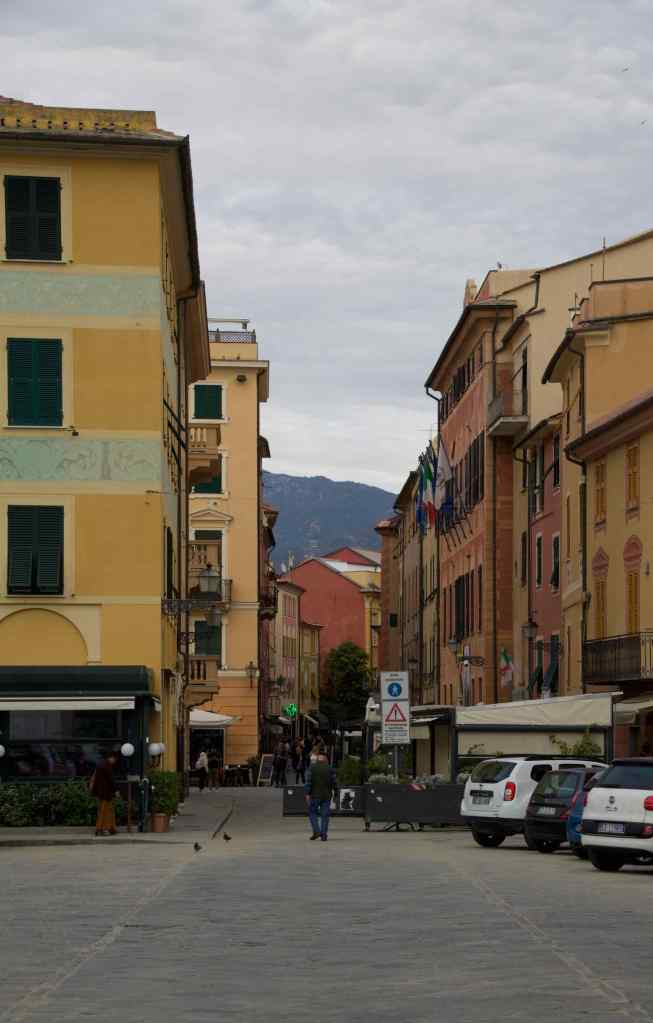

Scenes from Sestri Levante: Top – The Promenade close to our hotel; Centre: The Main Square; Bottom: A small beach in the main area of the town.

A ruined church on the hill above Sestri Levante
Over the course of the week we had planned to visit all five villages in the Cinque Terra, either starting our walks there or walking through to another destination. However the weather intervened on a number of occasions, and although we did manage to “tick off” all the villages, waking between them was often prevented by bad weather, or path blockages, caused by rain storms. Indeed, whilst the UK was suffering the lashes of Storm Babette, the northwest of Italy was enduring the attentions of its un-named twin sister! Did we get wet? Yes, several times.
Monterosso
Monterosso is the largest village in the Cinque Terra region of Italy and is located on hills cultivated with lemons, vines and olives. It’s amazing beaches, its beautiful reefs and the sea’s crystal clear waters (when it does not rain) make this small village one of the most popular of the Italian Riviera. The town is divided into two distinct parts: the old town and the new town. The two areas are divided by a single tunnel that caters to pedestrians and the very few cars permitted there.
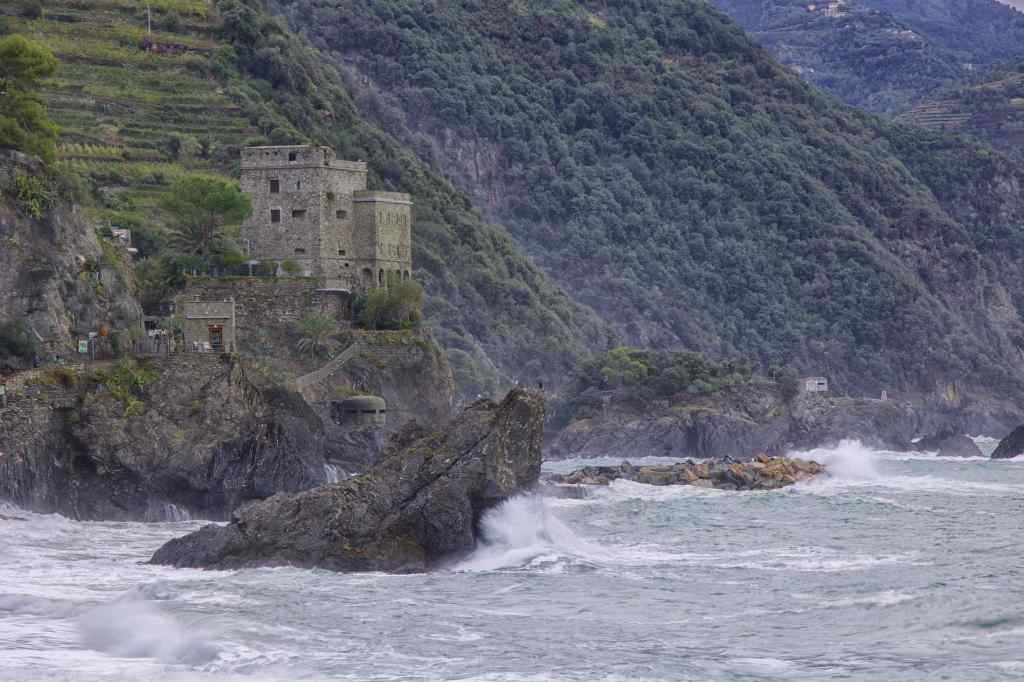
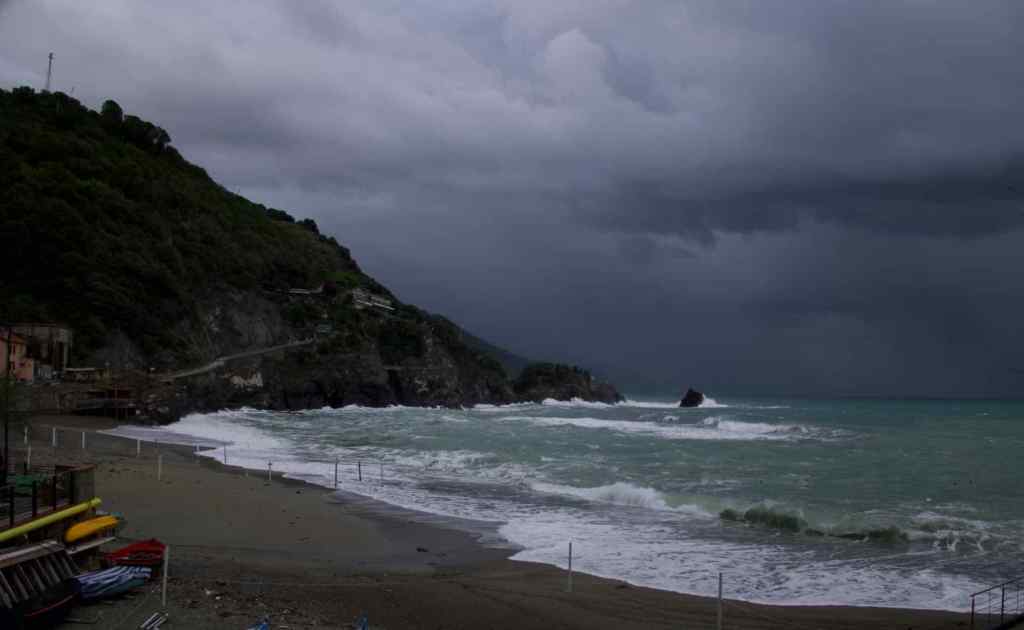

Top and Middle: Disembarking from the train in Monterosso you see the beach and castle built into the rocks. This is part of the new part of the village. The bottom image shows the memorial to all seafarers from the village at the entrance to the tunnel that leads to the old part of the town. The weather is still wet and stormy at times.
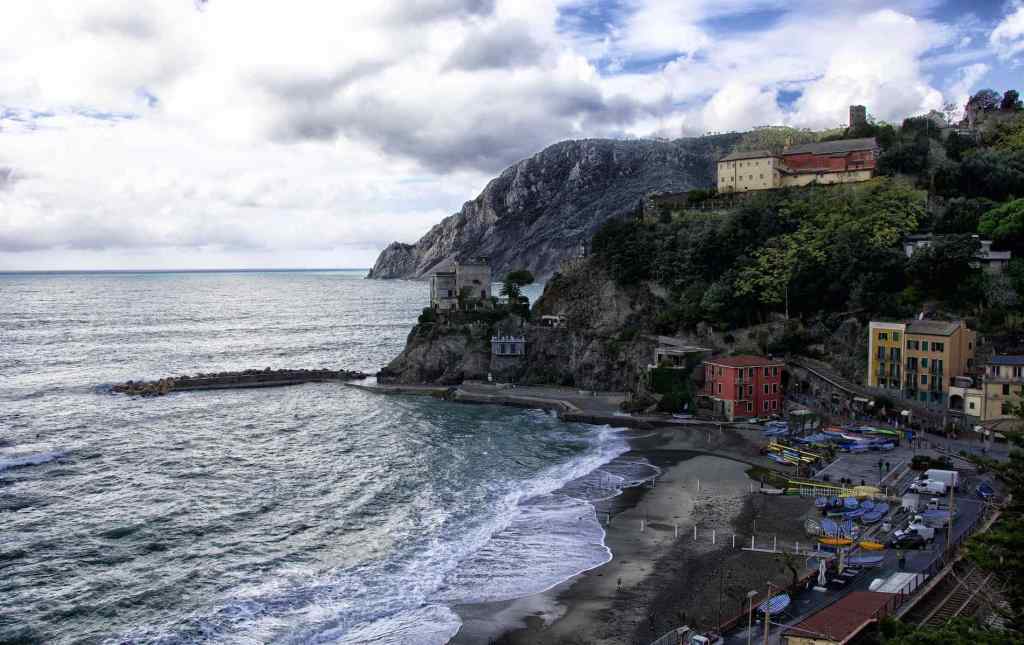
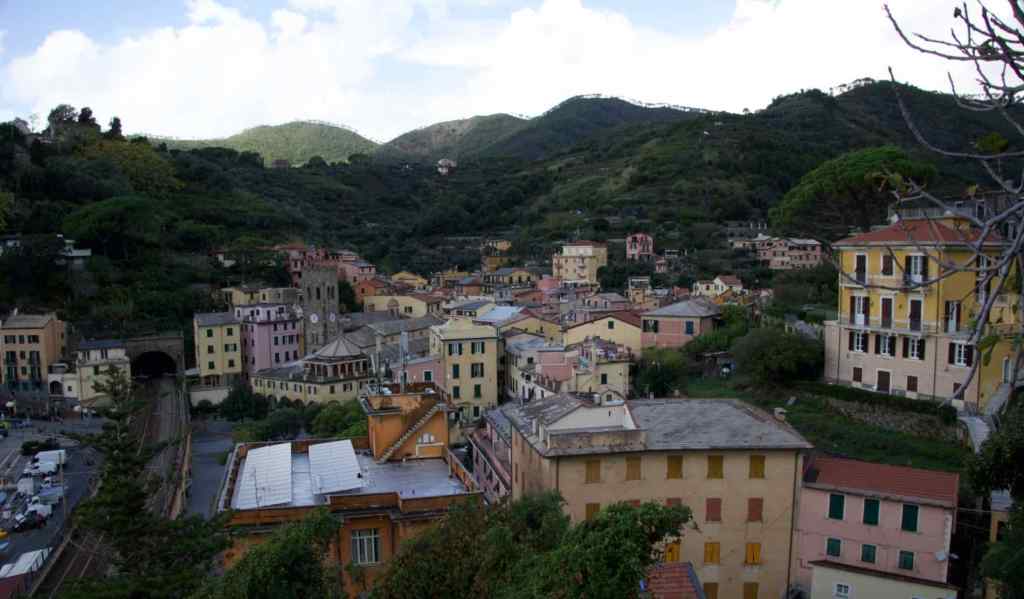
Top: A view of Monterosso new town taken rom the cliff path out of the old town, looking back. Bottom; Old Monterosso. Due to heavy rain the previous day, the clifftop paths were closed due to damage and rock falls.. We had to walk back down to the village and get a train to our next destination.
Vernazza
Vernazza is regarded as one of the most beautiful villages in Italy and was founded at or around 1000AD. It’s 14th Century castle was built as a defence against frequent pirate raids. It is the only natural port of Cinque Terre and is noted for its elegant houses. Despite the weather the main streets were very crowded when we arrived and because of the returning rain (again) it was difficult to find somewhere to sit. We lingered a while and managed to squeeze on to the end of a bench with newly found friends from the group to eat lunch and people watch.


Two views off the Main street in Vernazza. Note the complete lack of cars. There is no road down to the village centre. They also haul the boats up away from the natural harbour and park them on the street. Less evident here than elsewhere in the area.

A view of the village from the path on the way up the cliff side. Once agin we were turned back because of path closures.

An avian resident, a large Herring Gull. Many of these birds were loitering around the harbour front hoping to pick up scraps from the visitors. again.
Riomaggiore
Riomaggiori is the southernmost village in the Cinque Terra region when travelling from Sestri Levanti. It dates from the 13th Century and is known for its historic character and wine produced by vineyards nearby. Its narrow streets mean it is best accessed by train, as we did when we visited on our “3 in a day”trip. It is possible to walk from Manorolo, but once again the path between the two villages was closed.
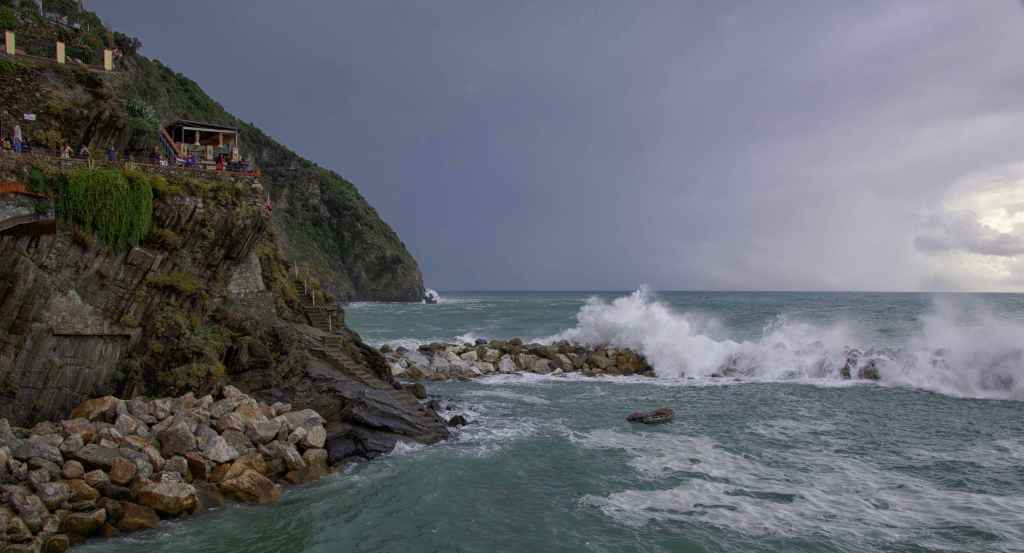

Top: The bay around Riomagiorri, more stormy weather on the way. Bottom: Looking back towards the harbour and the main street, Via Columbo.


Above: Two views of the Via Colombo, looking up and down. It was raining again so we took shelter in the verandah of a street cafe and watch people scurry by getting wet.

Houses on the slope
Corniglia
Corniglia is slightly different from other villages in the Cinque Terra, in that it sits on a cliff top above the sea and there is a100m drop to the ocean below. It is also the smallest village and the least accessible by road. To access the village requires a climb up 382 steps from the railway station. Once in the village the narrow streets open on to little squares and alleyways that lead out of the village.


Top: One of the narrow streets leading out into a square in the image below.


Top: Leaving Corniglia in the rain. Bottom: Looking back towards Corniglia Railway station.




Four images of Corniglia from the path to Manorola.

Volastre Church
Manorola
En rote to Manorola we paused briefly at Volastre, in the church square for lunch. Once again rain threatened and duly arrived as we left. As we walked down the path into Manorola the rain became torrential and the last mile into the village the rainwater was flowing down the road.
Manorola is the second smallest of the Cinque Terra villages and the oldest, with parts of the church dating from the 1338. Its primary industries have traditionally been fishing and wine making, the latter being especially highly regarded.

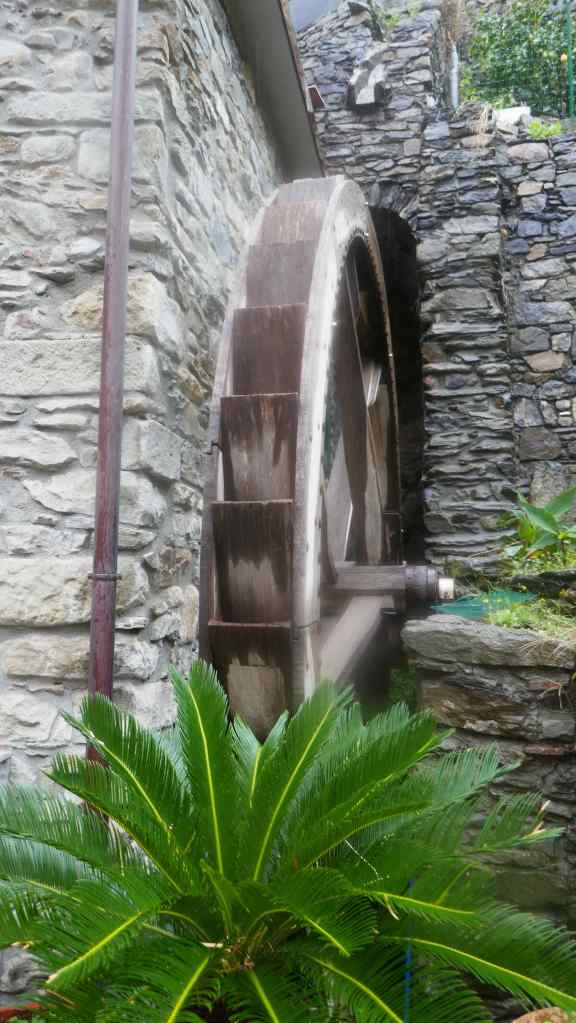

Images from the walk into Manorola
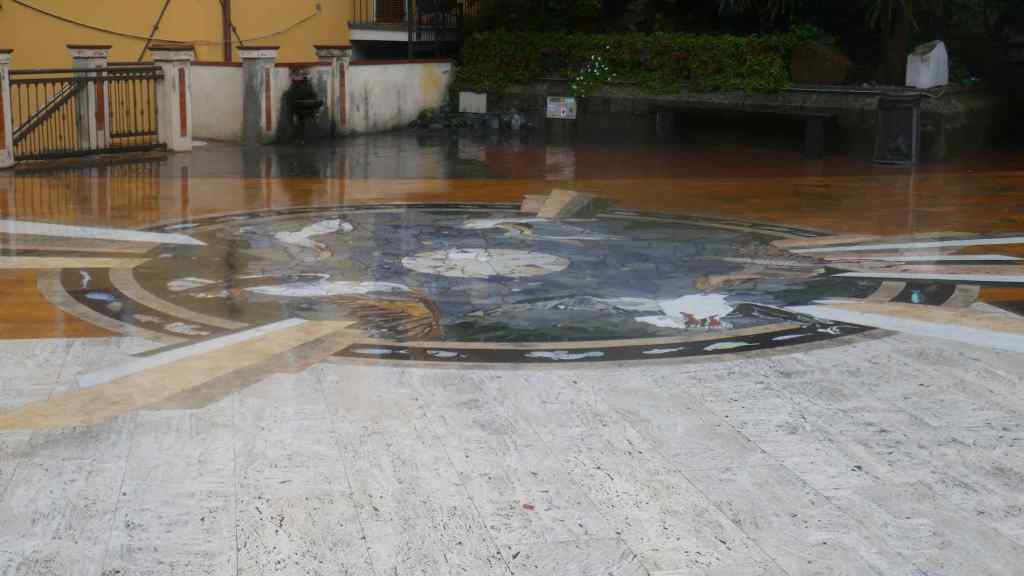

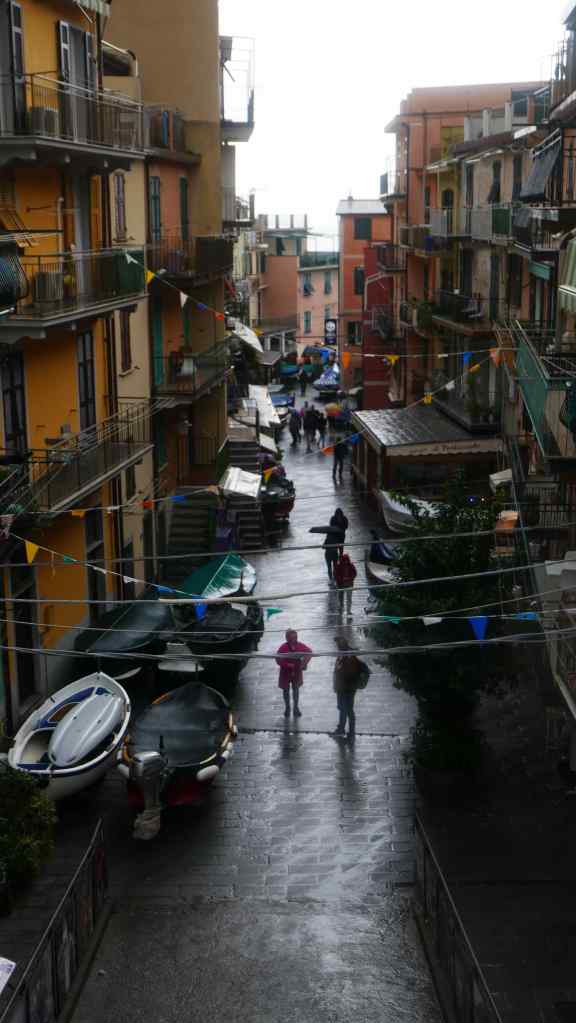
Top: The marble piazza overlooking the main street Manorola. Other images show the main street down to the harbour
In the cafe in Corniglia Lyn spotted a painting of Manorola which appealed to both of us. The view the paining represents is replicated above. I have done some tweaking and the original painting and my treatment of it are both below.


Top: The painting and Below: My Mono replica
Portofino
To the north of the Cinque Terra is the Italian Riviera town of Portofino. We had walked there over the cliffs and through lovely woodland from the nearby town of Santa Margarita, which in itself is a very colourful place. We paused there only for a coffee before heading up the steep paths to the cliff top and a woodland walk to Portofino.


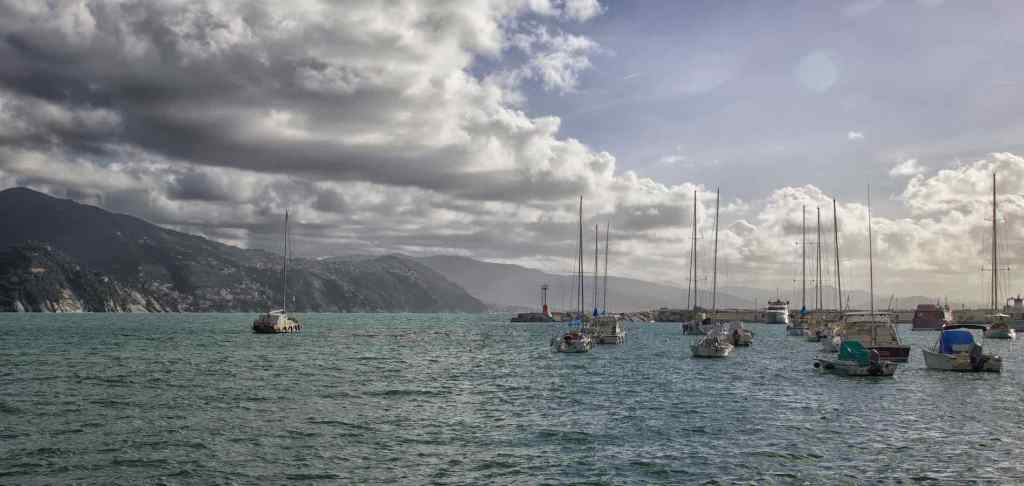

Postcard from Santa Margarita – Views of the coast line and the harbour

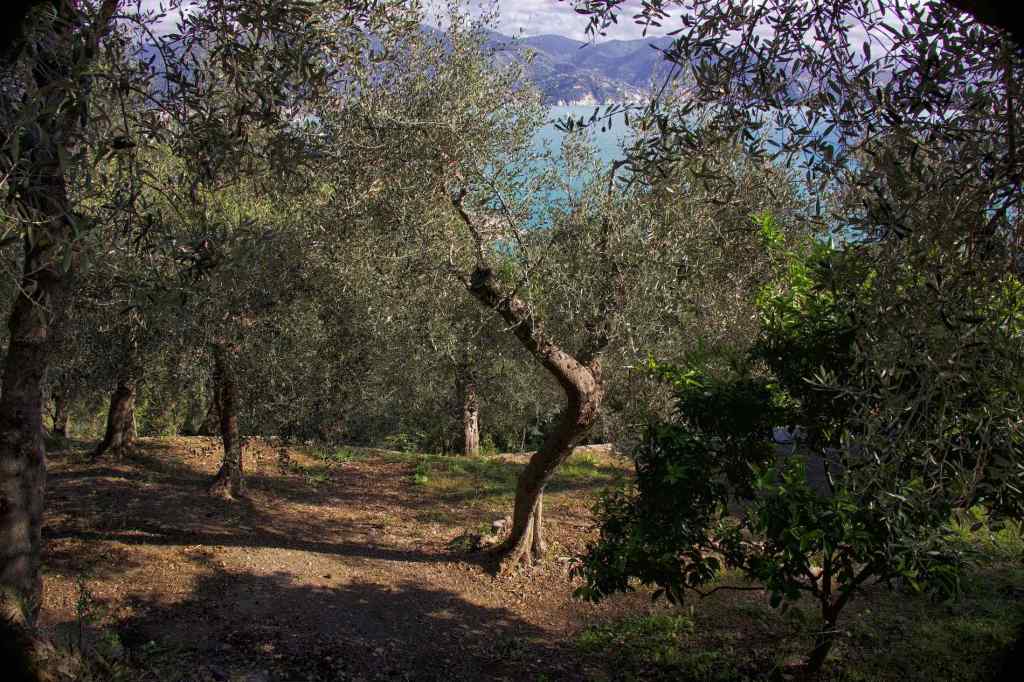
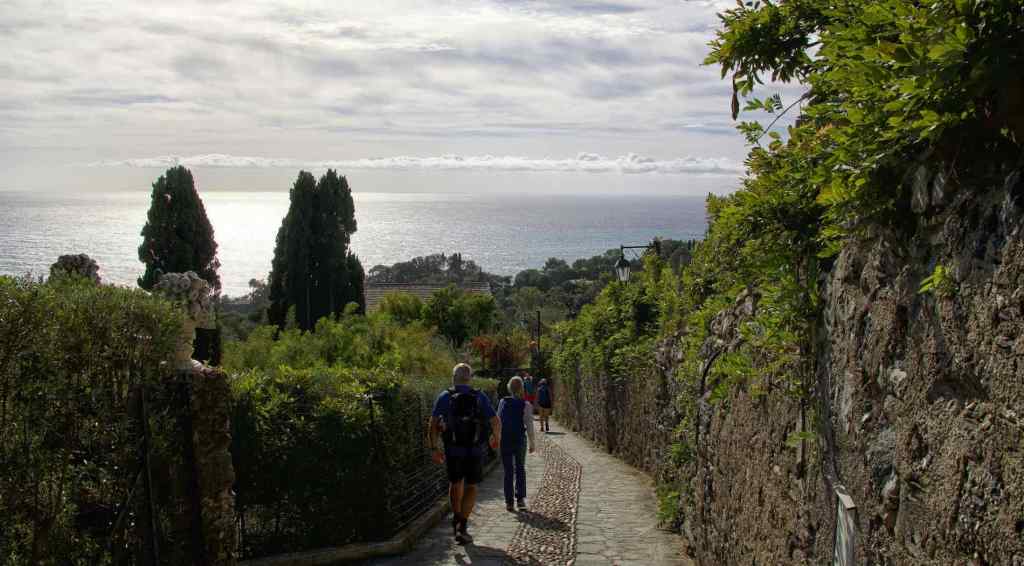
Top: 3 shot panorama of Santa Margarita from the path above the town; Centre: Olive Grove just off the path to Portofino; Bottom: The footpath and descent into Portofino
Portofino has a long history, having been mentioned in documents dating from 986. The town is clustered around its small harbour, and is known for the colourfully painted buildings that line the shore. Since the late 19th century, Portofino has attracted tourism of the European aristocracy and it is now a resort for the more well healed celebrities of the world. Indeed, the late English actor Rex Harrison owned a villa here, whilst Richard Burton proposed to Elizabeth Taylor in Portofino’s Hotel Splendido. More recently, Avril Lavigne spent her honeymoon here, and Kylie Minogue is a regular visitor although when we visited, she was not around!
As you can imagine, Portofino is a haven for the well off and I felt a little out of place sat on the sea wall eating my picnic, surrounded by the local glitterati enjoying Sunday lunch in some very expensive restaurants.


As you descend the path into Portofino you pass the village church. The path leads into the Piazza.


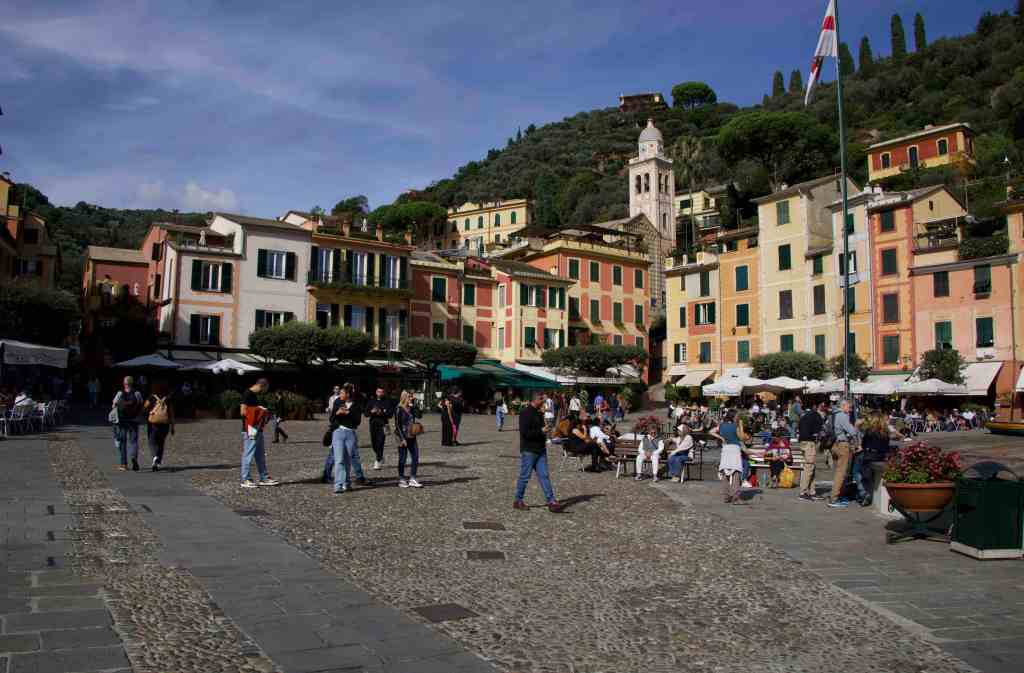
Some views of Portofino Harbour

3 shot panorama of Portofino Harbour area, with the pastel coloured buildings prominent
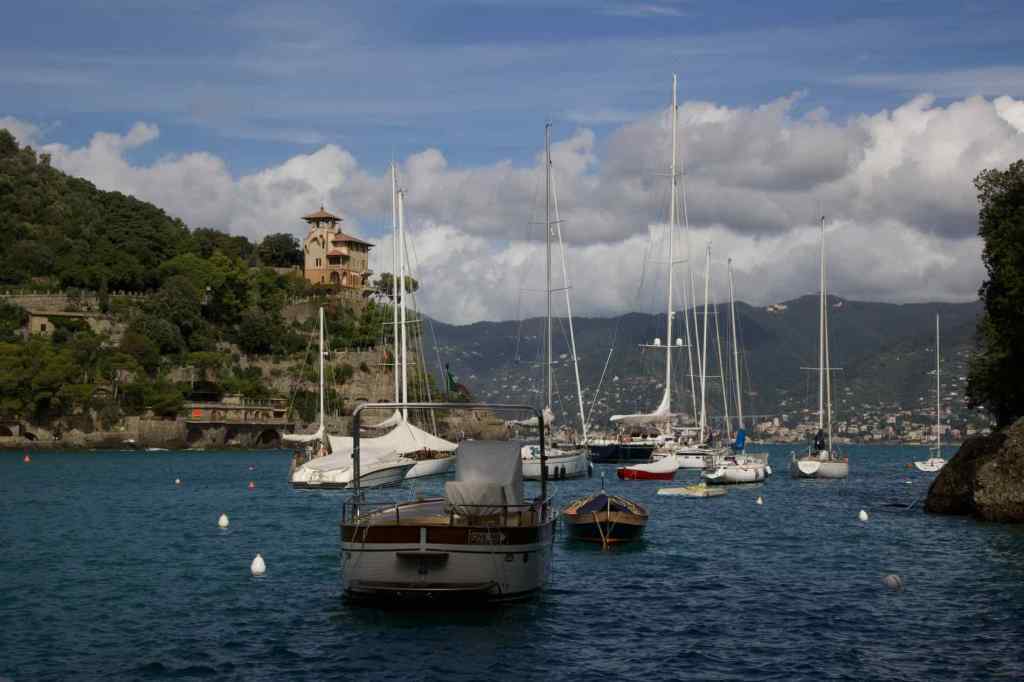

Leaving Portofino – a couple of images.


Two places to stay whilst in Portofino……..if money is no object

Us on the path between Portofino and Santa Margarita
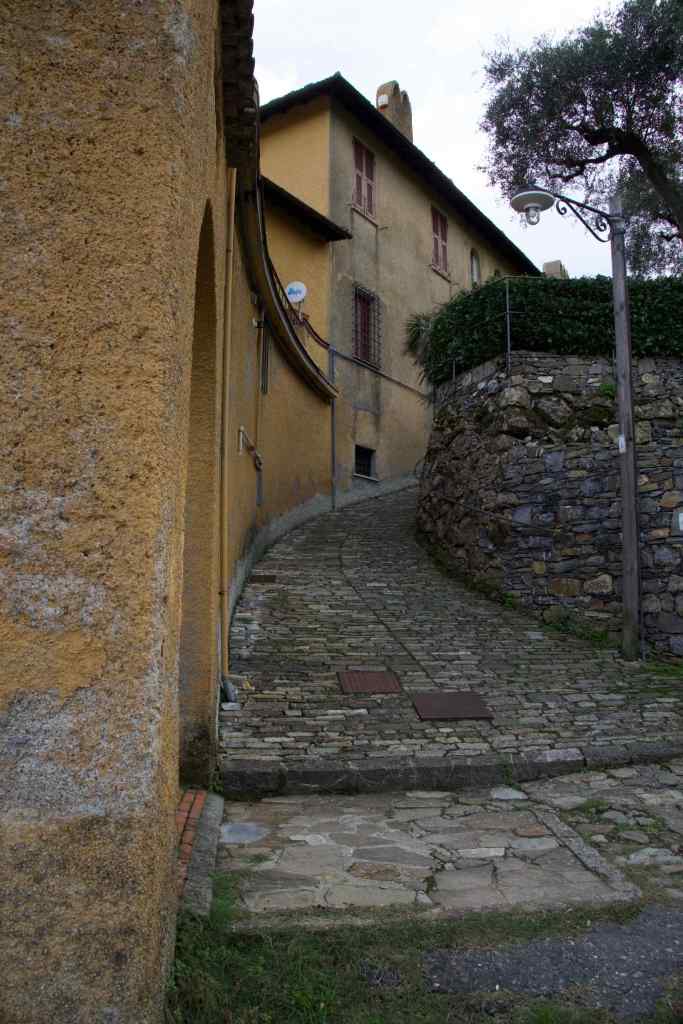
Arriving back in Santa Margarita – The path down the hill to the harbour.
The Creative Bit
What to do during spells of bad weather? Easy, take myself off to try some different photographic things. These images are some of the results.


Our hotel had a modern bit and an older bit. We were staying in the older bit, with chequered tile flooring and whitewashed walls. This decoration lends itself to some mono images. In the top image I liked the square lines and the chequered floor. The bottom image is looking down to the ground floor and I liked the geometric shape the staircase formed. There was a lift, but there was only room for one person and a suitcase so a walk to the fourth floor was in order every time.
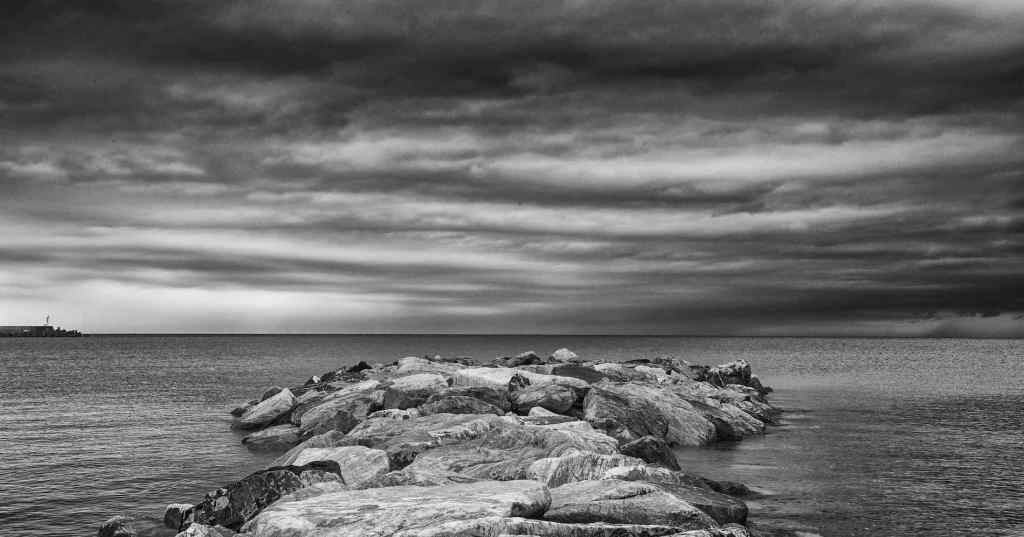

The weather was a mixed bag during our week there, and these two images were taken on the day we lost because the weather was too poor to walk.
A number of stone jettys had been built at regular intervals along the bay and with the dark grey cloud and textured rough stone they appealed for another mono shot.
The bottom image of these two is heavily cropped image hand held with a 1.5 second exposure. My camera has excellent image stabilisation which was needed for this picture. The sea really was that colour and those clouds were real and moving fast as it was very windy!
Finally below, two more images of the stormy weather, just to show the Mediterranean is not always a sun soaked mill pond! Yes, the sand really is black a product of volcanic activity thousands of years ago.
